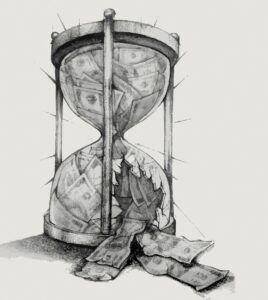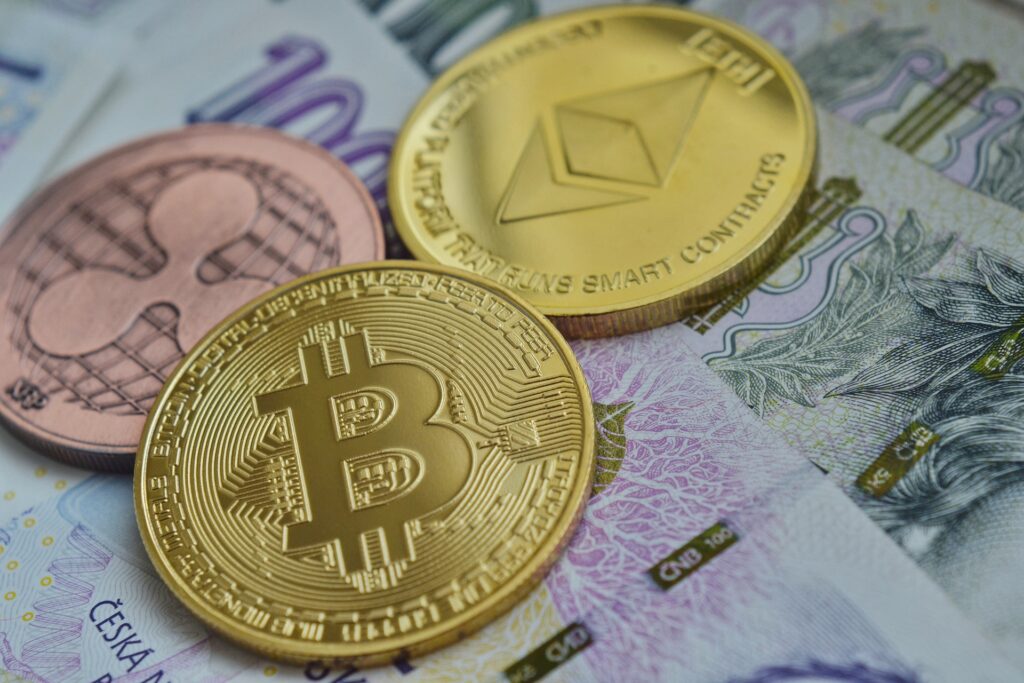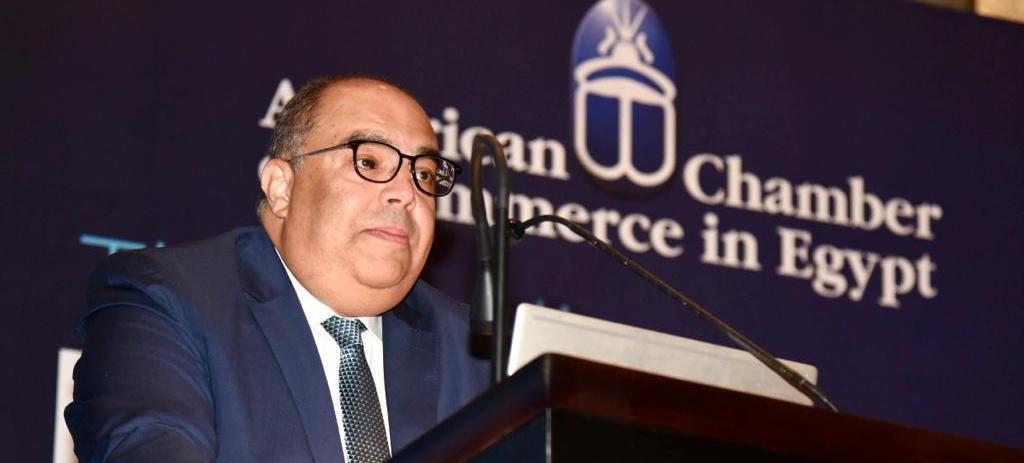Since COVID-19 started, Egypt, like many middle-income developing countries, has suffered from soaring inflation and public debt, local currency depreciation, and mounting pressure to implement structural reforms in exchange for financing.
Central bank (CBE) data shows that Egypt has witnessed inflation rise to four-decade highs, the pound has devalued to unprecedented lows, and external debt has increased nearly 40% since January 2020.
Conventionally, the government has sought assistance from the United States, EU, and multilateral international financial institutions like the World Bank, IMF, and EBRD to secure a significant portion of its dollar needs. Their approval came with an added advantage: a signal to international investors that Egypt meets those organizations’ baseline criteria.
In 2021, Egypt sought new and very different international financing partners. President Abdel Fattah el-Sisi said the country wanted to join the National Development Bank (NBD) that the coalition of Brazil, Russia, India, China, and South Africa (BRICS) created in 2015. Deputy Chairman Mohamed Abdel-Hamid of the House’s Economic Committee told the media at the time the move would “relieve the state budget of the pressure of finding … dollars to meet the country’s imports, as members of the bank can use their national currencies as trade exchange.”
Ronak Gopaldas, director of Signal Risk at the South Africa-based Gordon Institute of Business Science, said joining the NBD could backfire. “For advocates, it is a long overdue [move] that will present a credible economic and political counterweight to Western dominance,” he wrote in Premium Times, a Nigerian publication. “Cynics believe it’s simply a backdoor strategy by China to expand its sphere of influence.”

BRICS evolution
In 2001, Jim O’Neil, chief economist at Goldman Sachs, bundled Brazil, Russia, India, and China into one bloc (BRIC), as all four saw strong GDP growth given the international outlook back then. In 2010, South Africa joined, changing the name to BRICS.
In the following years, BRICS became an economic and geopolitical coalition as their GDP growth rate prospects began to cool. “The founding myth of the emerging economies has faded,” Günther Maihold, deputy director of the German Institute for International and Security Affairs, told Deutsche Welle in April. “The BRICS countries are experiencing their geopolitical moment.”
Their target is to become a counterpower to the G7, an “informal forum” comprising Germany, France, the U.K., Italy, Japan, Canada, and the U.S. Like the G7, BRICS members aim to align their agendas to global events.
That was evident in June 2022, when BRICS members met in China. “We are convinced that now, more than ever, the leadership of BRICS countries is needed to develop a unifying, positive course toward the formation of a truly multipolar system of intergovernmental relations,” Russian President Vladimir Putin said at the time.
That sentiment echoed once more in the June 2023 meeting, when South Africa’s Foreign Minister Naledi Pandor said: “Developed countries have never met their commitments [particularly since COVID-19] to the developing world and are trying to shift all the responsibility” onto emerging economies.
The key to realizing BRICS ambitions is to add more members, particularly to the NBD, which aims to become an alternative to the IMF and World Bank. Anil Sooklal, South Africa’s ambassador to BRICS, told Japan Times they were looking into applications from 20 countries that want to join. “This [expansion] is positive news for the bloc,” he said. “It demonstrates the confidence of [middle-income emerging countries] in the leadership of our group.”
BRICS doesn’t target all emerging economies. The priority is 100 countries categorized as “The Global South.” Sookal explained those are “developing [nations] that are not aligned with any major power,” he told Japan Times in May. “Most of them are still largely marginalized in terms of global decision-making.” He added such inclusion would “address the existing fault lines in the global, geopolitical, geoeconomic and financial architecture.”
Ultimately, BRICS gives Global South countries economic and political options. “The BRICS alliance is not so much a counter to the West as more of a forum for increased sovereign and autonomous thought,” Maihold of the German Institute for International and Security Affairs told Deutsche Welle in April. “In a bipolar world, [Global South countries] are vying for better terms.”
What Egypt wants
In March, the NBD announced the approval of Egypt’s request to become a member, joining other non-founding members Bangladesh, the U.A.E., and Uruguay (members in NBD since September 2021, according to Reuters).
In June, Egyptian Minister of Foreign Affairs Sameh Shoukry told Al Ahram the decision came because “current global crises require urgent dialogue among developing countries on ways to promote peace and prosperity.” There also are economic reasons for joining, Shoukry said.
Becoming part of the BRICS bank will benefit Egypt, he added, citing “shared positions on global economic challenges and opportunities.” He also noted joining the coalition reflects the “importance of multilateral action and cooperation based on principles of national sovereignty, mutual respect, common benefits, and solidarity.”
Azza Radwan, a former communications professor in Canada, said in an Ahram Op-ed that joining a coalition of emerging economies like BRICS “is exactly what many nations hope to achieve. Amidst the current global economic crisis, all nations are looking to strengthen their own currencies, and the BRICS group can support them in accomplishing that goal.” Radwan added that joining that coalition should help Egypt “overcome soaring prices, inflation and its acute dollar shortage.”
BRICS benefits
One of the most important perks for Egypt is its eligibility to seek financing from the NBD’s $100 billion capital and lending pool. Egypt also would benefit from the coalition’s Contingent Reserves, a friendlier funding framework compared to the IMF and World Bank, particularly if the debtor country struggles to repay its loan.
That financing also should be easier to secure. NBD’s mandate allows BRICS and non-BRICS Global South countries to secure funding “away from the painful experiences of the IMF’s structural adjustment and austerity measures,” said Astrid Prange, a reporter for Deutsche Welle, in April. “That is why many countries said they might be interested in joining the BRICS group.”
So far, there has been no lending by the NBD. “Once we’ve shaped the criteria [for lending], we will then make the decision,” said Pandor, the South African minister, at a March press conference. According to Joe Sullivan, a former White House official, talking to the Japan Times, whatever those “criteria” are, they will have fewer restrictions than the IMF or World Bank.
Radwan said another is intra-BRICS trade happens using both parties’ local currencies. “From the perspective of the global monetary system, [trading with BRICS] could mark a significant development in … de-dollarization, as countries … seek to diversify their foreign exchange reserve.”
Within BRICS, Russia, the UAE, and Brazil use the yuan to trade with China and their respective local currencies when trading among themselves. Meanwhile, Argentina, a BRICS applicant, announced it would use the yuan to pay for imports from China.
Away from China’s currency, the U.A.E. agreed with India to exchange non-oil products using rupees starting in January. Meanwhile, Brazil and Argentina, which share a 1,224-kilometer border, seek a unified currency to trade among themselves.
In April, the NBD said at least 30% of its loans would be in currencies of one of the BRICS members as part of its strategy to reduce the bloc’s dependency on the greenback.
However, BRICS members are considering a more substantial separation. In their June 2022 annual meeting, several BRICS members discussed using a unified currency for members, similar to the Euro. Or at least create a single reserve currency that all members could use when trading among themselves and with willing non-members.
The coalition’s economic clout is fueling the possibility of creating that new currency. BRICS GDP surpassed that of the G7 nations (31.5% vs. 30.7%) in 2021. That influence will only proliferate as more countries join, increasing BRICS’s geographic footprint beyond the current 26% of land and 42% of the world’s population.
A wise decision?
Gopaldas of the South Africa-based Gordon Institute of Business Science noted that joining BRICS could prove complicated for Global South nations. “First is the ideological disconnect between the current BRICS members,” he wrote in Premium Times Nigeria. “Apart from being regional [leaders] and having large masses with a sizable population, there’s not much else in common.”
Paul McNamara of GAM Investments, an asset management company, summed up BRICS as “an economic superpower in China with a potential one in India with three essentially stagnant commodity exporters,” he wrote in a February blog on The Financial Times. These “economies are dramatically different in terms of trade, growth and financial openness.”
A significant factor that Global South nations need to consider is “India and China’s competitiveness in manufacturing and their large demand for natural resources may push up the relative price of commodities,” said Dominique Desruelle, director of the Institute for Capacity Development at the IMF, in 2011. That would “undermine incentives for [Global South countries] to shift into manufacturing.”
There also are political conflicts between those two nations over the Ladakh border. Additionally, India distrusts China’s technology, banning 138 Chinese apps as of February, and wants to lure tech companies away from the world’s second-biggest economy. In May, the Indian government announced a pilot project that cuts processing time at ports from 10 days to one for electronic devices that enter the country for repair and return. Moreover, media reports have said Apple and China’s smart device maker Xiaomi want to increase their production in India for export.
The second major concern is “South Africa, Russia, and Brazil are all battling their own domestic and external money issues,” said Gopaldas. “Their financial firepower would be constrained.” That means Global South nations joining BRICS or the NDB “would be primarily funded by China.”
That could prove unsustainable. According to Ammar Malik, the head of AidData’s Chinese Development Finance Program, speaking to CNN in August that 35% of China’s Belt and Road projects to create preferential global trade routes for Chinese goods “are suffering from … implementation challenges.”
Gopaldas said strong demand for relatively lax funding could “force [China] to become more selective in its global efforts, which may compromise its ambitious plans for BRICS.”
Despite those concerns, Gopaldas sees that BRICS has “renewed impetus.” First is the “attack’ of wealthy nations, particularly the United States, on China and Russia. The second is rich nations’ “behavior during COVID-19 — especially through vaccine apartheid.” Lastly, the “West’s… Cold War mentality around the Russia-Ukraine conflict has alienated developing nations who don’t want to pick sides.”
Ultimately, “despite its obvious limitations and contradictions, the idea of forming an alternate node of power to rival the traditional global … order is compelling and ultimately unavoidable,” Gopaldas wrote in Premium Times Nigeria in August. “It’s like being at a playground and picking another seesaw to play on.”







